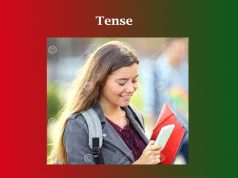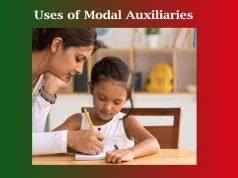Classification of Verbs
Classification of Verbs
Classification of Verbs
Verbs are the action words of the sentence—they express actions, occurrences, or states of being. Understanding the classification of verbs is fundamental to understanding how they function in a sentence. Verbs can be classified in various ways based on their forms, functions, and meanings. Let’s dive into the different classifications of verbs:
Action Verbs:
Transitive Verbs: These verbs express an action that is done to someone or something. They require a direct object to complete their meaning. For example, “She ‘bought’ (verb) a book (direct object).”
Intransitive Verbs: These verbs do not require a direct object to complete their meaning. They express an action that does not transfer to an object. For example, “He ‘runs’ (verb) every morning.”
‘Linking Verbs
Linking verbs connect the subject to additional information about the subject itself (noun, pronoun, adjective, or other descriptive words). They do not show action but rather a state of being or a condition. Examples include “be” (am, is, are, was, were), “seem,” “become,” “appear,” etc. For example, “She ‘is’ (linking verb) happy.”
Modal Verbs:
Modal verbs express attitudes (such as possibility, necessity, ability, or obligation) toward the action of the main verb. They include “can,” “could,” “may,” “might,” “must,” “shall,” “should,” “will,” and “would.”
Auxiliary Verbs (Helping Verbs):
Auxiliary verbs assist the main verb in a sentence. They are used to create different verb tenses, forms, voices, or moods. For example, “She ‘is’ (auxiliary) eating.”
Regular and Irregular Verbs:
Regular Verbs: Follow a predictable pattern for their past tense and past participle by adding “-ed” (e.g., “walked,” “talked”).
Irregular Verbs: Do not follow the standard pattern for their past tense and past participle forms. For example, “go-went-gone,” “eat-ate-eaten.”
Finite and Non-finite Verbs:
Finite Verbs: They indicate tense, person, and number. They change according to the subject. For example, in “She ‘runs’ every morning,” “runs” is the finite verb.
Non-finite Verbs: Do not change according to the subject and include infinitives, gerunds, and participles. For instance, in “She likes ‘to run’,” “to run” is the infinitive.
Phrasal Verbs:
These verbs consist of a main verb and one or more particles (prepositions or adverbs) that together convey a different meaning than their individual parts. For example, “She ’looked up’ the word in the dictionary.”
Regular and Irregular Verbs:
Regular Verbs: Follow a standard conjugation pattern.
Irregular Verbs: Have unique conjugation patterns. For example, “eat-ate-eaten” is irregular.
Dynamic and Stative Verbs:
Dynamic Verbs: These describe actions and processes that can be observed and can change. They often show an activity or movement. For example, “run,” “eat,” “write.”
Stative Verbs: Express a state, situation, or condition rather than an action. They often describe emotions, thoughts, or possession. For example, “love,” “believe,” “know.”
Understanding these classifications helps in constructing clear and meaningful sentences, giving insight into the different roles and functions verbs play within language. Recognizing the nuances of each type of verb aids in conveying precise meanings within sentences and expands one’s ability to communicate effectively. 0 0 0. Classification of Verbs
Classification of Verbs
You May Like:







